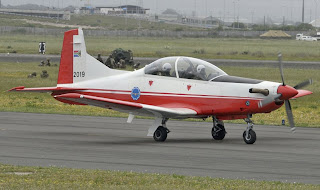The India Airforce is going on an upgrade sprint of its non combat aircraft inventory. A better air transport fleet gives a tremendous impetutous to the mobilisation pwer to a countrys forces. Lets see some of the plans of IAF to build up a robust fleet of haulers.
C-130 J:
The Indian Airforce ordered six C-130J-s, with an option to purchase six more in 2008. These are mainly to be used as insertion platforms for The Indian Special Forces.The option for six more aircraft was exercised in 2011. The IAF has six C-130Js in service as of January 2012. It has a payload of 19,958 kg and a range of 2,835 nmi (3,262 mi, 5,250 km).
C-17 Globemaster:
Indian Airforce has placed orders for 10 C-17 Globemaster III strategic air-lifters with an option of 6 additional aircraft.
C-17 is used for rapid strategic airlift of troops and cargo to main operating bases or forward operating bases throughout the world. It can also perform tactical airlift, medical evacuation and airdrop missions.
The aircraft requires a crew of three (pilot, copilot, and loadmaster) for cargo operations. Cargo is loaded through a large aft ramp that accommodates rolling stock, such as a 60 ton Arjun MBT .With a payload of 160,000 lb (72,600 kg)(( which is about 22,000 kg for than IL-76)) and an initial cruise altitude of 28,000 ft (8,500 m), the C-17 has an unrefueled range of about 2,800 nautical miles (5,200 km).The C-17 is designed to operate from runways as short as 3,500 ft (1,064 m) and as narrow as 90 ft (27 m). In addition, the C-17 can operate from unpaved, unimproved runways (although with greater chance of damage to the aircraft).[41] The thrust reversers can be used to back the aircraft and reverse direction on narrow taxiways using a three- (or more) point turn.
India finalized an order for 10 C-17s in June 2011.Delivery of first C-17 is scheduled for June 2013 and rest of the nine on order will be delivered in 2014. The Indian Air Force plans to base its C-17s at Hindon Air Force Station after deliveries in 2013–14.The aircraft is to provide strategic airlift of special forces in the event of national emergencies or terrorism.
Mi-17V5 helicopters:
Mi-17V5, designed for cargo lift of about five tonnes or 36 personnel, has an advanced multi-function cockpit display and upgraded twin engines that produce 2,200 horse power each, providing it the capacity to be started after switching off even in areas of altitude over 6,000 metres or 21,000 feet.
These helicopters are meant to replace the aging Mi-8 and Mi-17 helicopters of the IAF, about 200 of which are in service.
The first 21 of the helicopters have been delivered to the IAF beginning September last year.
The aircraft will be operated by the IAF to aid movement of Indian Army troops and for Special Forces deployment, logistics, search and rescue operations and for casualty evacuation.
AgustaWestland AW101 helicopters( VVIP):
The Indian selection was made after assessing the AW101 and the Sikorsky S-92 in field trials in 2008. One particular requirement of the Indian customer is that the helicopter must have a high tail boom to allow most ground vehicles to come close to the helicopter's rear exit for reduced threat exposure. 12 of are to be operated by the Indian Air Force to transport VVIPs.
IAI Harop:
The IAI Harop is an unmanned combat air vehicle (UCAV) developed by the MBT division of Israel Aerospace Industries. Rather than holding a separate high-explosive warhead, the drone itself is the main munition. This hunter-killer is designed to loiter the battlefield and attack targets by self-destructing into them. IAI developed the Harop for suppression of enemy air defense (SEAD) missions.
The Harop is controlled in flight by a remote operator. The Harop features two guidance modes: it can either home in on radio emissions by itself with its anti-radar homing system, or the operator can select static or moving targets detected by the aircraft's electro-optical sensor. This latter mode allows the Harop to attack radars that are presently shut down and therefore not providing emissions for the aircraft to automatically home in on.
Specifications:
Crew: None
Length: 2.5 m (8 ft 2 in)
Wingspan: 3.00 m (9 ft 10 in)
Performance
Range: 1000 km ( miles)
Endurance: 6 hours 0 min
Armament
23 kg (51 lb) warhead
UAC/HAL Il-214:
The UAC/HAL Il-214 Multirole Transport Aircraft (MTA) is a medium-lift military transport aircraft which is being constructed as a joint venture of the United Aircraft Corporation (UAC) of Russia and Hindustan Aeronautics (HAL) of India.The aircraft is expected to be powered by Russian-made Aviadvigatel PD-14 turbofan engines attached to top-mounted wings,[7] and will have a T-shaped tail. The cabin size would be similar to the Ilyushin Il-76, but will be half the length, supporting a maximum payload of 20 tonnes (44,000 lb) of military or civilian cargo. Range is expected to be 2,500 kilometres. Indian Airforce will use about 45 such aircrafts.
Pilatus PC-7 is selected for a tender to equip the IAF with 75 basic trainers which is going to fast track the pilot trainig programs of IAF.
Also the IAF is planning to procure 15 heavy lift helicopters for which the CH-47 Chinook and Mi-26 are being considered.







No comments:
Post a Comment